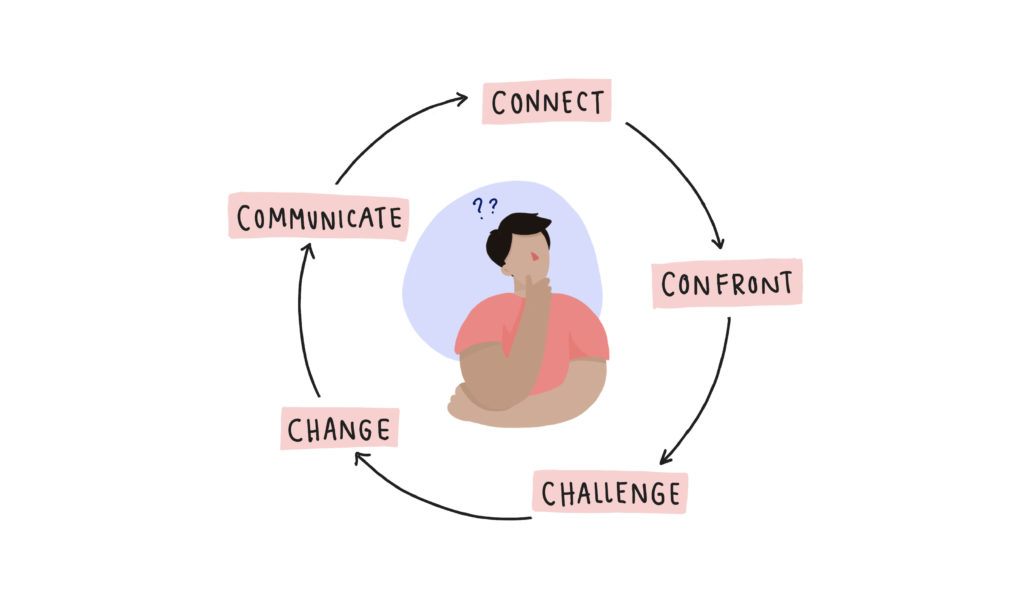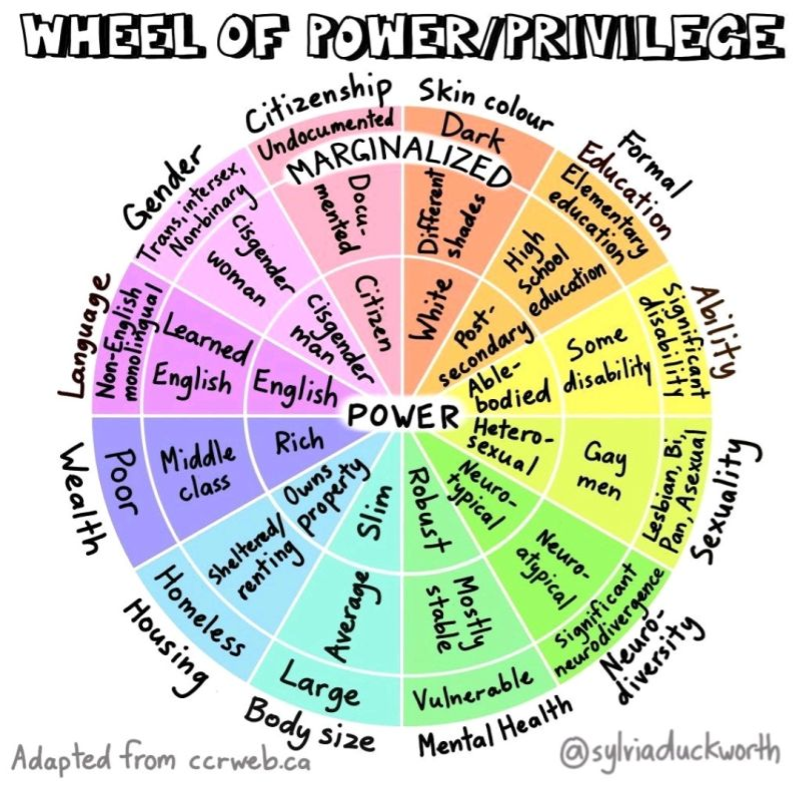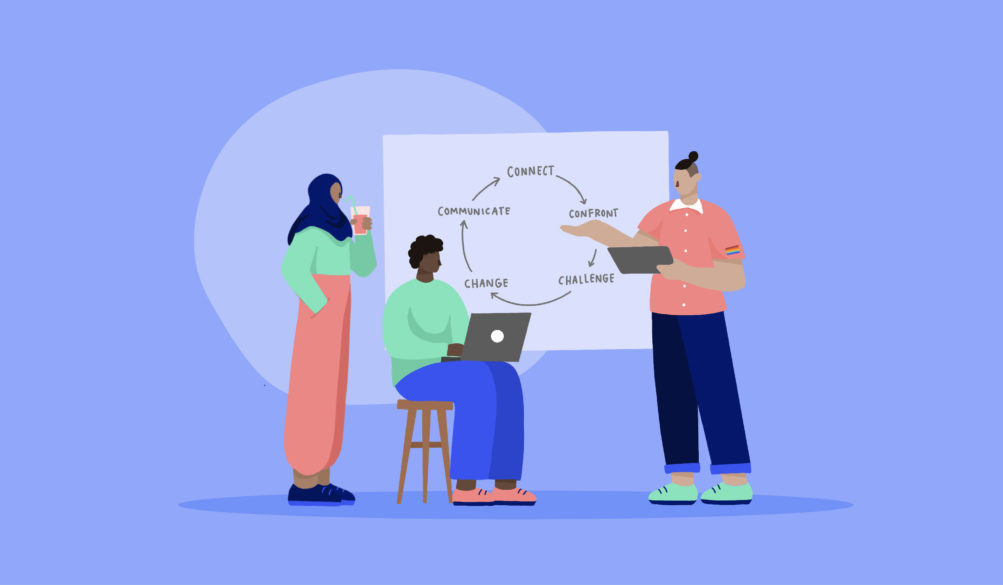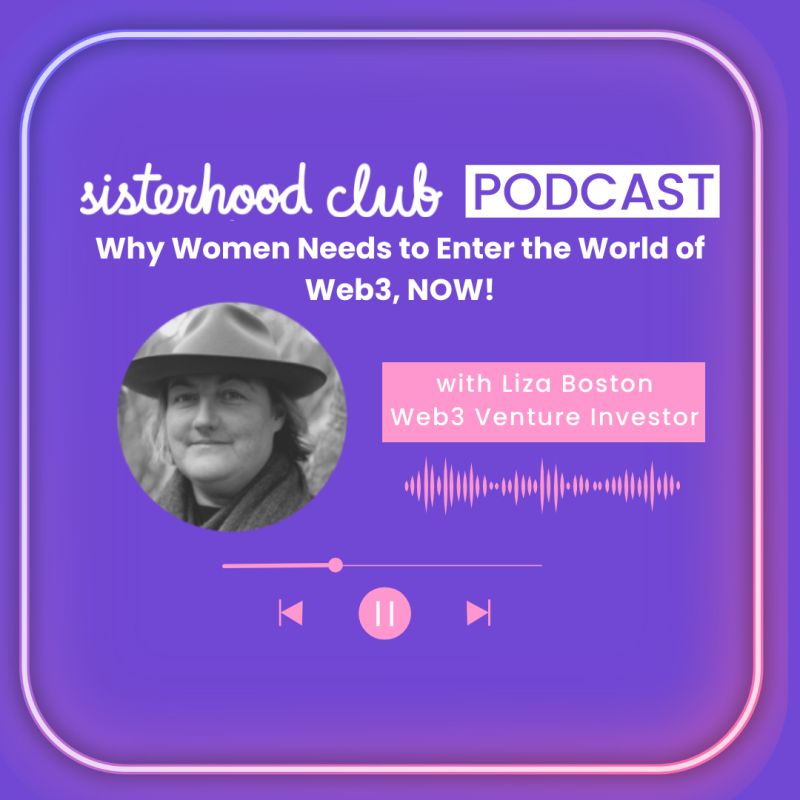I like to match words. It’s my jam. I also liked to match fruit and vegetables when I was a kid and imagine them getting married.. like avocados and mangoes (same same but different colour), and carrot and parsnip (which actually taste delicious when mashed together). So it’s serendipitous that I am now part of the Digital Smoothie mix. Below, I have come up with five C’s that are the ingredients for an inclusive strategy. They work in a circle, which is also a C, so it makes it easy to remember!
Taking a journey of self discovery leads to our WHY and our purpose, and reveals our own unconscious bias and privilege of power. This revelation ignites our passion and capability for change and empowers us to challenge our beliefs. By connecting with our stories we can confront our unconscious bias, challenge our beliefs and make strategic changes towards more equity, diversity and inclusion. This strategy starts and ends with storytelling and communication.
Communication is the key to all strategies. We are humans. Since the beginning of humanity, we have used stories and storytelling to communicate and learn about each other, our history, and the world. Building an inclusive strategy starts with hearing stories and learning from each other.

Connect
Ask questions and listen. What are your employees WHY? Why do they work and do what they do? What are they passionate about? What barriers are in place that hinder their success?
Understanding your employees WHY will reveal similarities, differences, limiting beliefs, unconscious bias and hidden potential. Understanding our WHY and harnessing that potential leads to development and innovation.
For more on understanding your WHY Start with Why – Simon Sinek
The Outcome:
Employees are more connected to their purpose They find more meaning in their work
They are more connected to the organisation They understand the brand story more effectively Employees discover their own unconscious bias They understand the need for structural change They are more open to change
Employees are more connected to each other They work more efficiently together
Workplace culture improves
Employee retention improves
Confront
Self discovery and connecting to your WHY needs to happen from the top down. As business leaders, part of building an inclusive strategy for your organisation is understanding your own WHY and purpose. Businesses need to evolve to grow and progress. The only way to achieve this is to be open and willing to confront your own unconscious bias and limiting beliefs that lead to prejudice and discrimination. If upper management are unwilling to challenge and change their own unconscious bias and limiting beliefs then middle management needs will not be met. Middle managers will struggle to listen to their team’s needs, obstacles and barriers, if their own needs, obstacles and barriers are not heard. This creates a toxic work culture that no strategy or new policy will be able to cure.
Challenge
The benefits of diversity are proven. But being diverse does not mean you are inclusive. Inviting different perspectives, but refusing to hear them is pointless. Hearing different stories that challenge our biases and perceptions improves mental health and workplace culture which leads to development and innovation. The power of different perspectives is that they empower you to reach further understanding. Further understanding creates further connection and the ability to influence by recognising what others’ needs, wants and desires are.
If you are wondering why your team is not more diverse, and you can’t find any appropriate diverse hires then you first need to look at why. It’s not logical that there simply aren’t any talented and experienced people with diverse backgrounds. It’s more likely that those people are not applying for roles because of a cultural fit. One of the benefits of broadening your approach is that you will attract a wider range of candidates, something all organisations need to consider in the current climate of worker shortages.
The below wheel of power segments the intersectional groups in our society that face further marginalisation.

If you were to imagine yourself in the outer segments for one day, what barriers do you believe you would face that would hinder success in the workplace? It is a good idea to workshop this with speakers (or TED talks) from these outer segments that can inform your organisation of the realities of intersectionality through sharing their stories of marginalisation and how and what they need to succeed in the workplace.
If your business currently only employs people from the inner two segments, why? What are the barriers to hiring people from the outer two segments?
How can your business open more opportunities to people from the outer two circles?
Change
What changes need to happen in your workplace in order to support workers from the outer two segments? Some questions you could ask are:
Are your company values and vision statements inclusive?
Is the language on your website and socials proactively inclusive?
Do you require unnecessary information in the recruitment process?
Is your recruitment process open and transparent?
Do you offer:
- Flexible hours?
- Remote work?
- Inclusive spaces such as a private breastfeeding room?
- Wheelchair access?
- Bathrooms that are inclusive for those who are gender diverse or have specific cultural beliefs?
“Embracing diversity and forming welcoming, inclusive cultures is not just the right thing to do, it makes business sense. An inclusive organisation is two times as likely to exceed financial targets, three times as likely to be high-performing, six times more likely to be agile and innovative, and eight times more likely to achieve better business outcomes”.
Sheree Atcheson (Global Diversity, Equity & Inclusion Leader) for Forbes.
Creating change toward an inclusive culture will set your organisation on a journey of evolution. An inclusive culture that understands the strength of its diverse stories will breed success.
Communicate
When communicating your strategy it’s a good idea to start how you intend to end. Allow the journey to be fluid, organic and spontaneous, but plan your journey with an intended outcome of inclusion. Do this by communicating from the start to the very end. Include everyone in the process and gather feedback on this communication after you roll out the strategy. A good strategy is built to be sustainable, but also to evolve. The strategy should be flexible and able to be examined and challenged by any employee. A survey for incoming employees will help to onboard inclusively and deliver the best outcomes for each employee to succeed. A survey on any outgoing employees will help to fill in any gaps. Communication creates connection, and connection creates communication.
Enjoy Reading About Culture, Diversity,Strategy & Digital Transformation?
Here are some articles that you might like:
It all starts with strategy – By Rania Awad
4 Common Strategy Mistakes – By Byron Kelly
Effective Change Management For Digital Transformation – By Adrienne Tilley Le-fevre
Is Culture the Missing Piece of Your Digital Transformation Strategy?Is Culture The Missing piece Of Your Digital Transformation Strategy? – By Eugenie Rutherford
Transform Your Meetings in 5 Minutes – By Eugenie Rutherford









Leave a Reply